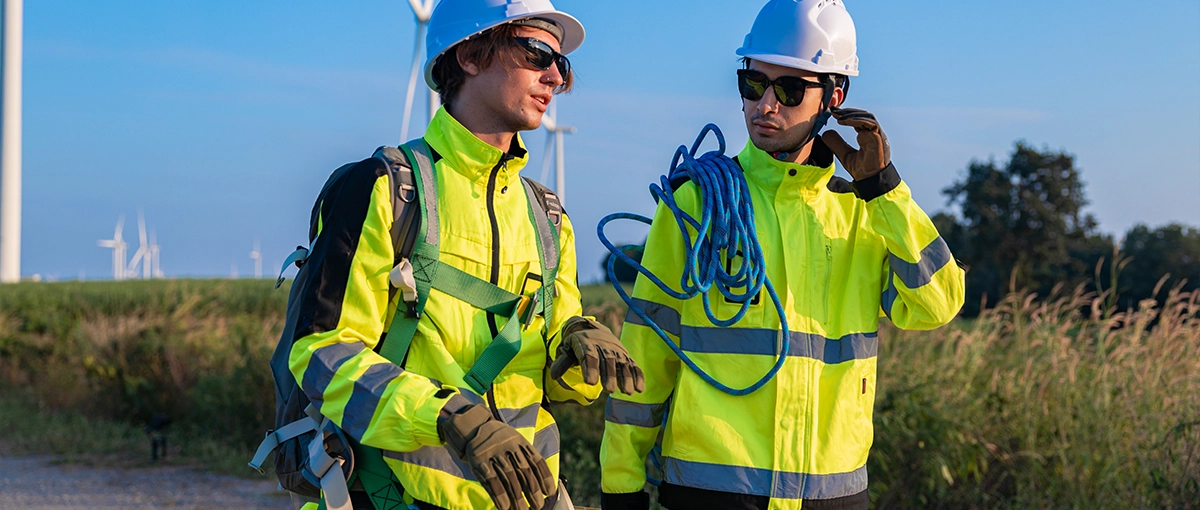Revolutionizing Protection: What’s New in PPE

When it comes to workplace safety, personal protective equipment (PPE) is evolving faster than ever. Innovations today go beyond traditional gear, bringing intelligent, adaptive, and ergonomic designs that enhance both protection and productivity. From smart helmets to sensor-equipped gloves, these breakthroughs are transforming how teams stay safe on the job.
Smart Helmets with Embedded Sensing
Modern hard hats now come loaded with cutting-edge sensors that monitor environmental and worker health conditions in real time. Features include:
- Tracking temperature, humidity, and fatigue levels throughout shifts.
- Alert systems that warn of unsafe carbon dioxide levels or irregular heartbeat patterns.
- Integration with site safety dashboards to proactively prevent incidents.
Innovative designs combine traditional impact protection with solar panels or kinetic energy harvesters powering LED lights and wireless communication systems. These LED panels boost visibility, especially in low-light environments or night shifts.
Respirators That Adapt to Air Quality
Respiratory protection is smarter and more comfortable than before:
- Automatic airflow adjusters and filter saturation sensors optimize breathing effort.
- Powered modes activate as breathing resistance rises, helping workers endure longer shifts.
- Advanced filter layers target nanoparticles, VOCs, and other emerging airborne threats.
- Hot-swappable cartridges enable quick field changes without the need for costly re-certification.
Headgear Integrated with AR and Connectivity
Augmented reality (AR) visors embedded in helmets deliver hands-free operational support:
- Visual overlays guide remote experts and assist in equipment diagnostics.
- Onboard cameras and speakers facilitate two-way communication without interrupting workflow.
- Voice commands minimize tool switching, increasing efficiency and safety.
- Dynamic alerts and lockdown controls can be updated centrally and delivered live through visors.
- RFID integration tailors information display to the worker’s task and location.
Gloves Tailored to the Task
Protective gloves are now engineered for specific job demands:
- Chemical-resistant gloves combine multi-layer soft polymers with reinforced fingertips for dexterity and durability.
- Anti-vibration gloves incorporate silicone gel pads to reduce hand strain during heavy tool use.
- Seamless knit gloves with liquid-repellent coatings are replacing traditional stitched leather for assembly and fine work.
- Advanced materials reduce thickness without sacrificing cut or puncture resistance.
Footwear with Biometric Feedback
Safety boots are no longer just protective shells—they now collect valuable health data:
- Pressure sensors monitor posture and gait to flag fatigue or potential injury risks early.
- Polymer outsoles resist chemicals and extreme temperatures while adjusting traction dynamically.
- Removable inserts equipped with wireless charging ensure no downtime during shift changes.
High-Visibility Wear with LED and Fluorescent Boosts
High-visibility apparel has been enhanced to improve worker visibility in all conditions:
- Battery-powered LED strips light up key motion areas such as arms, back, and legs.
- Fluorescent fibers maintain brightness even after hundreds of wash cycles.
- Modular magnetic LED patches allow quick replacements without changing the whole garment.
- Maintenance logs track LED lifespan for safety audits and compliance.
Cooling and Warming Wearable Tech
Temperature extremes no longer mean sacrificing comfort or safety:
- Evaporative cooling combined with phase-change materials regulates body temperature in hot environments.
- Rechargeable heating elements in jackets, gloves, and socks protect workers from cold exposure.
- Flexible batteries conform to body movement to reduce bulk and improve wearability.
- Smart controls allow preset temperature management to maximize energy efficiency over long shifts.
Eye and Face Protection with Adaptive Filters
Next-generation goggles and shields provide dynamic protection:
- Electrochromic lenses adjust tint instantly to block high-intensity light.
- Particle sensors activate internal airflows to prevent lens fogging and debris buildup.
- Face shields with polycarbonate depths and self-healing coatings withstand chemical splashes and abrasions.
- Quick-disconnect mounts allow accessories like cameras and sensors to be added as needed.
Wearables for Heat, Gas, and Vibration Monitoring
Clip-on wearables complement PPE kits by monitoring critical safety metrics:
- Track exposure to heat, humidity, and toxic gases with real-time alerts.
- Monitor cumulative vibration to prevent long-term nerve and circulation damage.
- Wireless data sync to smartphones or safety hubs enables shift-end reports and analytics.
DIY-Friendly PPE Platforms
Cost-conscious and fast-moving operations benefit from modular PPE platforms:
- Snap-on sensors, battery packs, and lens adapters turn basic PPE into smart gear.
- Easy add/remove modules allow customization as budgets and risk profiles evolve.
- These flexible platforms lower barriers to adopting advanced PPE technologies.
Summary: The Future of PPE is Smart, Adaptive, and Integrated
Today's PPE innovations are not merely incremental upgrades—they’re reshaping workplace safety by combining protection with real-time data, connectivity, and ergonomic design. Embracing these advancements helps reduce injuries, improve worker comfort, and boost operational efficiency.
Explore how your team can benefit from smart helmets, adaptive respirators, AR headgear, and more. If you want, I can help design tailored PPE evaluation tools or guide you through selecting the right technology mix for your workforce.


